Innovating L&D with AI at Real Chemistry
TL;DR Nicole Riopelle, VP of Organizational Effectiveness at Real Chemistry, shares how her team is using AI to drive strategic learning outcomes. From scrappy beginnings in supply chain to designing an internal AI-powered coach, her journey is a case study in L&D innovation. This post breaks down how Real Chemistry balances billable priorities with development goals, operationalizes learning globally, and turns AI into an L&D force multiplier.
From Supply Chain to Strategic Learning Architect
Nicole Riopelle didn’t start in L&D. Her journey began in supply chain operations where an urgent business need led her to build a DIY training program. “It was literally a binder full of Word docs,” she laughs. But that effort halved the ramp-up time for project managers—a result too good to ignore.
Her knack for solving real business problems with learning carried through roles at Ulta Beauty and now Real Chemistry, where she leads organizational effectiveness.
This early experience grounded her approach in business outcomes. Learning wasn’t a standalone initiative, it was a tool for achieving measurable performance improvements. It taught her the value of agility and user-centered design long before those became L&D buzzwords.
“Learning wasn’t my job. It was a tool to solve a business problem. That mindset never left.”
Balancing Billable Hours with Human Development
At Real Chemistry, a fast-paced agency environment means that time is money—literally. Pulling team members away from client work for training is a delicate dance.
“We’re still experimenting with formats that don’t disrupt business but still build capability,” Nicole admits. That means:
- Piloting modular learning programs that can be consumed asynchronously
- Running “learning days” onsite in hubs like New York and London to drive engagement
- Offering virtual instructor-led sessions and self-paced content to meet learners where they are
Nicole describes the balance as a series of ongoing experiments, constantly evaluating what resonates with learners and aligns with business cadence.
The team leverages feedback loops to refine formats and delivery models, ensuring that learning is both impactful and minimally disruptive. They prioritize initiatives that directly support organizational goals, aligning L&D investments with client outcomes.
Strategic L&D isn’t about carving out time—it’s about designing experiences that align with business rhythms.
Rebranding L&D as Organizational Effectiveness
Nicole’s current title isn’t accidental. Moving from “learning” to “effectiveness” signals a shift from nice-to-have to business-critical.
“Yes, I own learning. But I also oversee engagement, culture, and performance,” she explains. That expanded mandate allows her team to:
- Facilitate strategic planning sessions with leadership teams
- Design custom interventions that address team dynamics and execution gaps
- Embed coaching into performance management and career development
This broader remit empowers L&D to influence not just knowledge acquisition, but behavioral and cultural transformation across the company.
Nicole brings her facilitation and coaching skills into every corner of the organization—whether it’s helping a team navigate change, driving alignment on strategic priorities, or designing onboarding pathways that reduce time to productivity.
“Learning is one lever. Effectiveness is the outcome.”
Turning AI into an L&D Superpower
Real Chemistry is doubling down on AI—and not just in buzzwords. Nicole’s team recently built an internal AI coach that helps employees prepare for tough performance conversations.
“We had all the guidance docs already. We just fed them into our in-house AI tool and trained it with our language and systems,” Nicole says. “Now it sounds like one of us.”
This AI assistant emerged from a single brainstorm with a new team member. Within weeks, it became a company-wide tool available to support performance reviews. It offers:
- Real-time coaching prompts for difficult conversations
- Script suggestions tailored to the company’s language and values
- Scenario-based practice grounded in actual HR guidance
It’s a prime example of how AI can amplify the reach of L&D without increasing headcount.
What made this initiative successful?
- A clear use case: Supporting performance reviews with coaching
- Existing documentation: Materials were already vetted and in place
- Fast iteration: The team prototyped, tested, and rolled it out rapidly
Why this matters:
- It democratizes coaching, making it real-time and scalable
- It operationalizes knowledge already embedded in the organization
- It models how AI can be applied to specific learning outcomes
This isn’t about replacing L&D. It’s about augmenting it. With tools like this, Nicole’s team is making learning more contextual, immediate, and scalable than ever.
Scaling Learning in a Global, Distributed Team
Real Chemistry operates globally, and Nicole’s team serves employees across geographies. That requires a flexible, multi-format learning strategy.
Their approach includes:
- Virtual instructor-led training (VILT) for real-time engagement
- On-demand courses for self-paced consumption
- In-person learning days to build culture and deepen relationships
Nicole personally travels to different offices to lead sessions and gather feedback firsthand. “Learning days are about more than content. They’re community moments,” she notes.
The team is also navigating the return-to-office movement by using L&D as a driver. “If we want people to come in, we have to make it meaningful. Learning creates that draw.”
This hybrid approach helps maintain consistency in development opportunities while respecting the nuances of time zones, roles, and cultural expectations.
Lessons from the Frontlines of Learning Innovation
Looking back, Nicole has one piece of advice for her younger self: focus on being of service.
“Every big leap came from solving a real problem in the moment. Not chasing a promotion,” she says.
That bias for action now fuels Real Chemistry’s learning strategy in a global, high-stakes environment.
AI isn’t replacing L&D. It’s augmenting it. And with leaders like Nicole at the helm, it’s becoming a force multiplier for organizational effectiveness.

